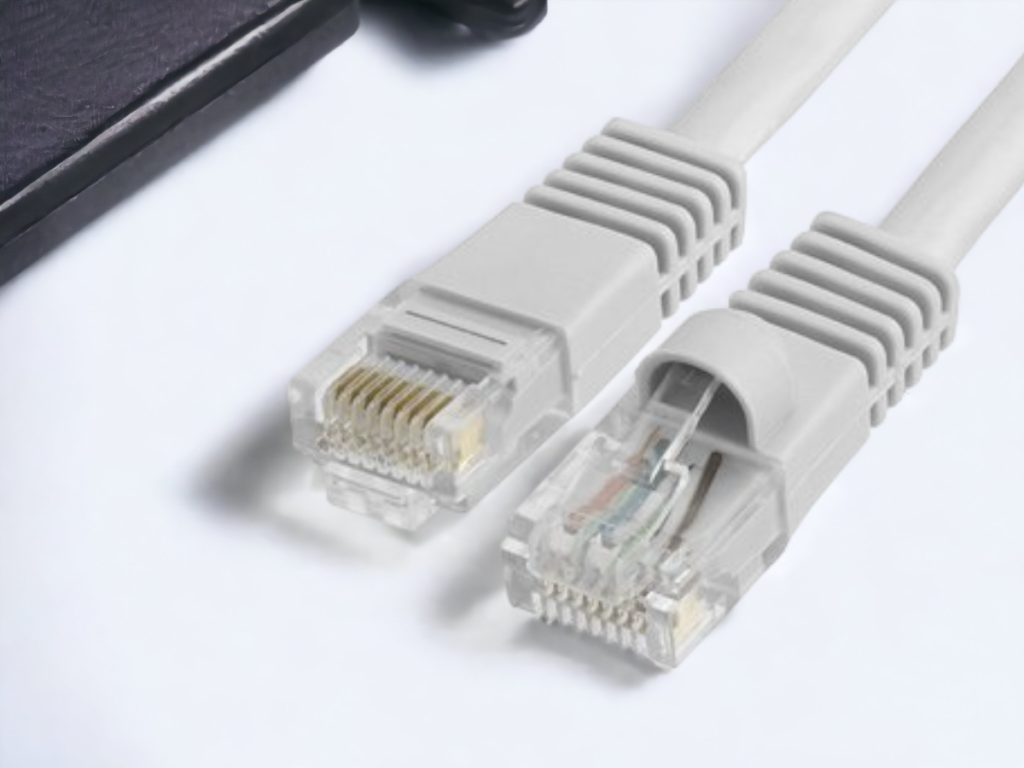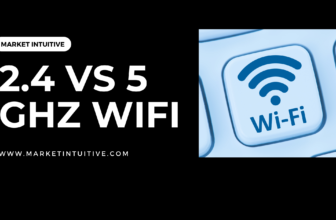Cat6 Vs Cat6e Cable: Which One Is Better For You?

Cat5e and Cat6 cabling are common in home networks, but you may have heard about Cat6e recently. Both cables support faster data speeds than the older Cat5 cabling, so you might wonder what the advantages of using a Cat6e cable instead of a standard Cat6 one are. This article explains what Cat6 vs Cat6e cables and their differences.
It’s critical to consider the type of cable to use in the house or office if you’re setting up a network. You should choose a network cable that is reliable in terms of network speed.
It’s also a good idea if the cable is future-proof, so you don’t have to redo the wiring when new features become available. Which is the better of cat6 vs cat6e, based on comparison and common usage? Which factors should you consider before settling on one?
Choosing between cat6 and cat6e can be pretty daunting. I have the answers to all of your cat6 and cat6e questions.
Difference Between Cat6 Vs Cat6e Cable
Let us know to look at the difference between Cat6 vs Cat6e cable:
Cat6 Cable

Cat6 networking cable is an improvement on the long-established Cat5e cable. It improves Cat5e cable with a higher twist ratio and near-end crosstalk performance. Despite being similar in function, Cat5e and Cat6 differ in some ways.
Cat6 network cable has a performance specification –
- 1GB data rate
- Performance tested to 550MHz
- 250MHz data transmission
- The channel length of 328 Feet (100 meters)
You’ll frequently discover Cat6 cables in 23 to 24 AWG sizes. Additional shielded, unprotected, outdoor, riser, stranded, and plenum variations are available. Almost anywhere can use category 6 cables.
Cat6 cables can provide improved performance and future-proofing if everything is done correctly! Under perfect conditions (proper terminations, the right environment, and the suitable cable), Cat6 cables can deliver 10GB up to 33-55 meters.
Most people find this cable length sufficient to run around the house. Cat6 cable has become very popular for this reason. However, remember that the Cat6 cable cannot guarantee 10GB connectivity.
As previously mentioned, the Cat6 cable is designed for 1GB applications, & doubling the frequency compared to Cat5e cables is possible under ideal conditions.
What significance does Cat6e have? Certain manufacturers exclusively produce Cat6e cable. Elite Cable is one of them! Over the years, I have witnessed a wide range of wants and preferences in the networking industry.
Every installer has a distinct method, including how they terminate cables and what they prefer to work with.
Spline was used in the development of Cat5e and Cat6 cables. A spline/cross-separator is placed in the cable’s center to separate individual twisted pairs. By increasing the separation of the twisted pairs, near-end crosstalk is reduced, resulting in better performance.
A signal’s strength can be reduced by crosstalk between pairs, so the spline was invented to combat this issue better.
The spline may be hard to work with at times, so please remember that this is a matter of personal preference. If upgrading from Cat5e or earlier, you may find it harder to terminate. However, the spline is crucial.
There are two kinds of cat6 cables to give clients more alternatives and address some of these problems — a Cat6 cable with a spline & a Cat6 cable without a spline.
This is where Cat6e comes into play.
Cat6e Cable

The Cat6 cables that do not have a spline are still referred to as Cat6, and the Cat6 cables that do have a spline are referred to as Cat6e.
It is crucial to ensure that cables meet the performance specifications of Cat6 cable as designated by ISO/IEC and TIA.
The performance requirements for Cat6 cable (Link Class E) are 1Gb and 250 MHZ with a channel length of 100 meters.
This specification is met by both Elite Cat6 and Cat6e cables, although the Cat6e cable is not a standardized class by TIA. I ensure that your cables meet this specification and perform as well.
Cat6e cable network has performance specifications –
- 1GB
- Performance tested to 600MHz
- 250 MHZ
- The channel length of 328 Feet (100 meters)
How To Compare Cat6 Vs Cat6e Cable
You can compare Cat6 vs Cat6e cable based on the following factors –
Shielding
Cat6 and Cat6e cables have a durable body construction.
There are shielded twisted pair (STP) and unshielded twisted pair (UTP) shielding formats for cat6 cables.
PVC coating protects the wires from interference, preventing them from being bare. The wires are twisted into pairs to reduce crosstalk, and a spline runs through their length to maintain a sound structure and separate the pairs.
The cat6e is constructed the same as the cat6 and protects the twisted pair of wires with PVC.
All cat6e cables are shielded, and there are no UTP or STP variations.
Maximum Bandwidth
Cat6 and Cat6e cables provide different levels of bandwidth.
Furthermore, the cat6 cable can support gigabit connections with a bandwidth of 250 MHz. Some manufacturers claim that their cat6 cables can transmit up to 500 MHz.
The cat6e ethernet cable supports a broader bandwidth than its predecessor, the cat6. Its bandwidth is 600 MHz wide. Even if the connection is long, the transmission speeds will stay constant.
Regarding performance, the two network cables provide the same optimal performance of up to 328 feet.
Maximum Transmission Speed
The two ethernet cables support Gigabit transmission, but the cat6 Gigabit transmission is limited to a certain distance.
The cat6 network cable offers a maximum transmission speed of 10 Gbps over a limited distance of 37 to 55 meters. If the distance is extended, the speed drops to 1000 Mbps.
A cat6e line maintains a consistent internet speed of up to 10 Gbps, even over long distances. The cat6 version provides internet speeds up to 10 Gbps. Even over a distance of 100 meters, the cat6e maintains an internet speed of up to 10 Gbps.
Do Cat6 & Cat6e Cables Use Different RJ45s?
When choosing the correct RJ45 cable for your house, you should select the right RJ45. The network cable you use should match the RJ45 you choose.
The cat6 and cat6e cables employ the same RJ45 connector, but the cat6e version has a different structure. You can therefore use any 8p8c component for both cables.
It’s essential to pay attention to the AWG size of the plugs. It would be beneficial if you matched the cable with the plug size. Also, use stranded RJ45s with stranded cables and solid RJ45s with solid plugs.
Do Cat6 & Cat6e Cables Use Different Keystone Jacks?
The cat6 and cat6e ethernet cables, such as the stranded cable, riser, and plenum, aren’t fitted with separate keystone jacks. You should ensure you utilize the proper keystone jack with the appropriate cable.
You should use shielded keystone jacks when connecting a shielded cat6 network cable. Similarly, you should use unshielded keystone jacks with unshielded cables.
You should decide whether you want to use a 90-degree or 180-degree cable when you choose to use one.
Which Patch Panel Should You Use?
Choose the patch panel you wish to use based on whether the cables are shielded or unshielded.
The most popular catch panel configurations are 24-port and 48-port models, which can be installed on a rack or the wall.
You can connect the cat6 and cat6e cables using cat6 connectors.
Before deciding on a connector type, you must consider your network configuration and requirements.
FAQs (Frequently Asked Questions) On Cat6 Vs Cat6e
1. Is CAT6e better than Cat6?
Cat6 cable has a frequency range of 500 MHz, whereas CAT6e cable has a range of 600 MHz. The Telecommunications Industry Association (TIA) has established CAT6 as an industry performance standard, and CAT6e is not.
2. Is Cat 6e faster than Cat6?
The cat6 and cat6e are different in that the latter maintains internet speed over a long distance. The cat6e supports internet speeds of up to 10 Gbps. Even over a distance of up to 100 meters, the 10 Gbps remains consistent.
3. Is Cat6 and CAT6e the same?
The structure of Cat6 vs Cat6e cables differs when I look at them. Elite Cat6 has more insulation but no spline, whereas Elite Cat6e has a spline to combat crosstalk. These cables support 250MHz and 100 m (328 ft) of 1Gb up to 100 meters (328 ft).
4. What does the E stand for in CAT6e?
The CAT6e grade signifies CAT6 “enhanced,” which is an improvement on the original CAT6 specification beyond the TIA’s limits.
Summary: Cat6 Vs Cat6e

Cat6 and cat6e cables are excellent if you want cables supporting gigabit-speed transmission. Their sturdy constructions, especially tightly twisted wires, and splines, make them good choices.
The Cat6 and Cat6e cables are durable and save you money on rewiring shortly, allowing for fast-speed transmissions.
The cat6e cable is suitable for domestic and professional applications, while the cat6 cable can be used for domestic and professional applications.
Now, which one should you choose? Cat6 cable will be an excellent choice for your home or business if you aren’t working in a data centre. Cat6e cable would be excessive in such settings.
I hope this article on Cat6 vs Cat6e cable sounds helpful!






